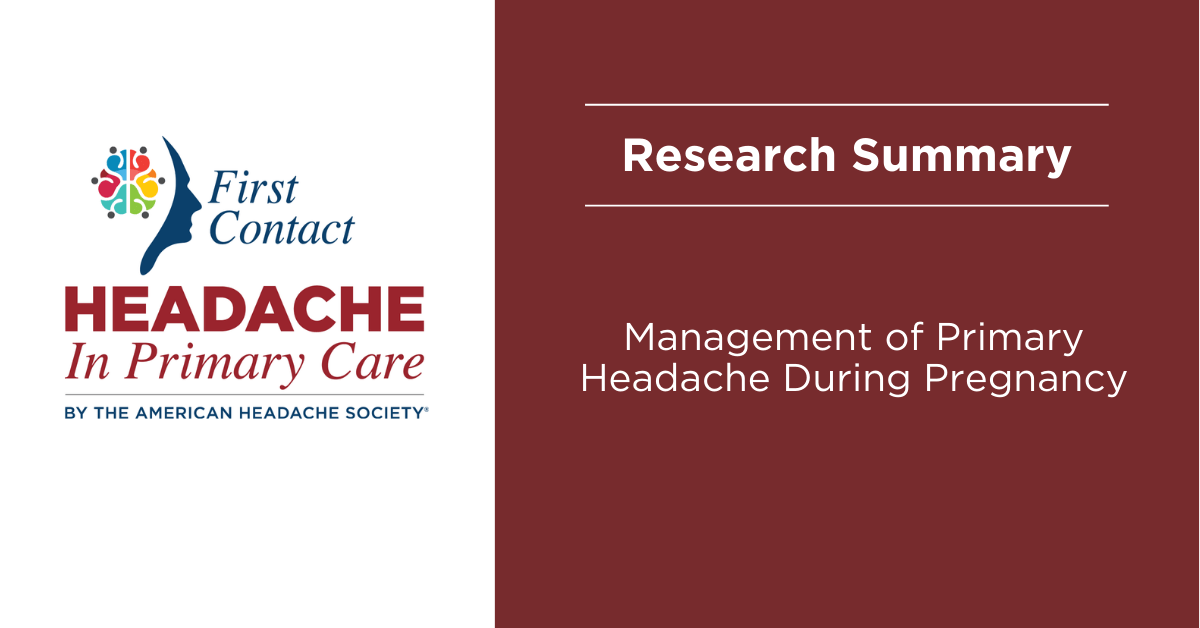
Practice Guideline Summary: Management of Primary Headache During Pregnancy
Management of Primary Headache During Pregnancy is a published systematic review for the Agency for Healthcare Research and Quality (AHRQ) to support the American College of Obstetricians and Gynecologists in its effort to develop a new clinical practice guideline on management of primary headaches during pregnancy.
This study’s objective was to provide evidence-based recommendations for interventions to prevent or treat primary headaches in women who are pregnant, attempting to become pregnant, postpartum, or breastfeeding. It asks two key questions:
- What are the benefits and harms of pharmacologic and non-pharmacologic interventions to prevent acute attacks of primary headache in women?
- What are the benefits and harms of pharmacologic and non-pharmacologic interventions to treat acute attacks of primary headache in women who are pregnant?
Funded by the AHRQ, it researched adverse events in 14,185 pregnant women with and without primary headache. It involved a systematic review (SR) of large medical databases, including Medline, Embase, Cochrane CENTRAL and ClinicalTrials.gov and included 16 primary studies (direct evidence) and 26 systematic reviews (SRs).
The study defines primary headache to include migraine, tension headache, cluster headache, and other trigeminal autonomic cephalgias (TACs). It identifies two types of evidence:
- Indirect: when participants received treatments for other health conditions that were not primary headache.
- Direct: when participants received treatments for primary headache.
Study Results
No evidence was identified that showed beneficial effects of interventions to prevent primary headache in women who are pregnant, attempting to become pregnant, postpartum, or breastfeeding.
The following medications may be associated with adverse effects to the fetus:
- Antiepileptics, venlafaxine, tricyclic antidepressants, benzodiazepines, β-blockers, prednisolone, and oral magnesium
- Acetaminophen, prednisolone, indomethacin, ondansetron, antipsychotics, and intravenous magnesium
The following treatments may not be associated with adverse effects to the fetus:
- Calcium channel blockers
- Antihistamines
- Triptans (except for increased child emotionality and hyperactivity at 3 years of age)
- Low-dose aspirin
Efficacy
For acute treatment of primary headache, a combination metoclopramide and diphenhydramine may be more effective than codeine.
Practice Recommendations
Practice recommendations include the following:
- Due to sparsity of information, decision makers will need to rely on some evidence about benefits and harms of the interventions from the general population.
- Limitations of existing research and knowledge should be discussed with patients by clinicians managing patients with primary headaches during pregnancy, postpartum, and breastfeeding.
- Given the limited evidence, the patient’s values and preferences and the clinician’s expertise and experience take on an even more important role.
- Future research is urgently needed to identify effective and safe interventions to prevent and treat primary headaches in before, during, and after pregnancy.
This summary is part of the First Contact — Headache in Primary Care initiative, an American Headache Society program that provides educational resources to empower healthcare professionals and improve headache and migraine care. We encourage providers in all stages of their careers to visit our homepage to access educational tools to improve patient care.


